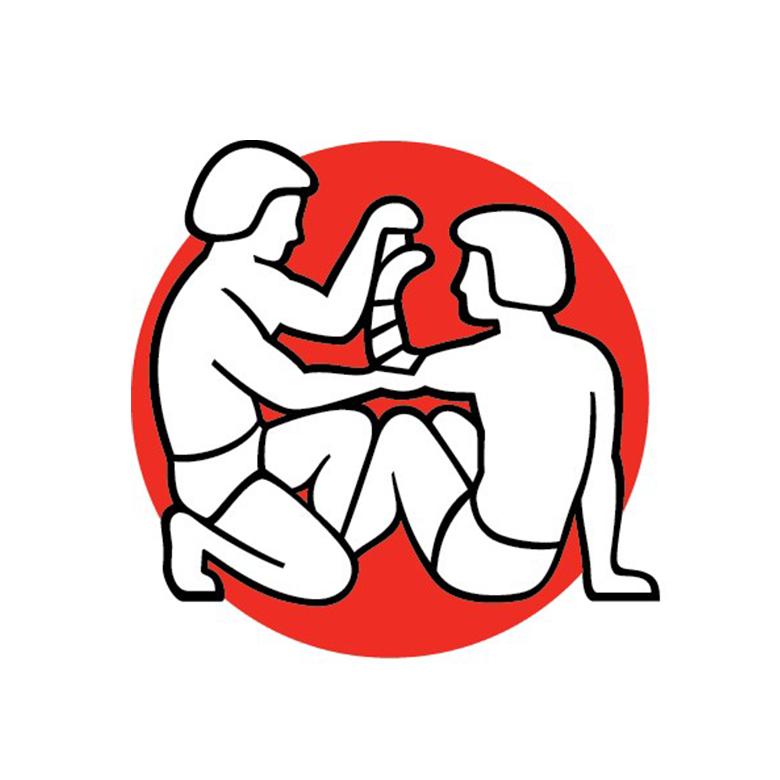
"Our mission is helping save lives with an emphasis on helping," says Karoline Myklebust Linde, CEO of Laerdal Global Health (LGH). "We're not the ones on the frontline, but we're hopefully a part of empowering and enabling healthcare workers to save lives."
According to the World Health Organization's (WHO) latest figures, every year, 303,000 women die during pregnancy and childbirth, and 2.7 million babies die during the first 28 days. Often this is due to bleeding, infections, newborn asphyxia or other conditions that could've easily been prevented with the right tools and training.
This is where Laerdal Global Health comes in. Since 2010, they've been dedicated to maternal and newborn health and have made a genuine impact in many of the world's most impoverished areas. Their cornerstone product, The Natalie Collection, combines industrial design with education to create life-saving tools for mothers and babies.
The trio of low-cost training tools includes the NeoNatalie Newborn Simulator: a life-like newborn replica, the MamaNatalie Birthing Simulator: a wearable, realistic 'womb', and the NeoNatalie Suction: a silicone suction device to clear babies' airways.
But, more importantly, these aren't just stand-alone products. The training is where the real impact is made, according to Design Manager, Cansu Akarsu.
"The tools in The Natalie Collection are things people have to put on their body," she explains. "They need to act, be part of the role-play, and that's really at the core of simulation training. “There's always an educational methodology that follows the products — we make sure it's easy to train and easy to follow."
Since 2010, the collection has now been rolled out in an astounding 80 countries, training more than one million healthcare workers. Not only has the tool helped save countless lives, but has proven to be "much more versatile than expected," says Linde, paving the way for a new range of products.
"They would use it to run scenarios on all sorts of birth situations, that it wasn't necessarily designed for, like breech or other birth complications," she explained. "We recognised that we needed to create a birthing simulator that covers a wider range of complications and offers a broader set of skills."
"We've expanded the Natalie range, including another birthing simulator called MamaBirthie for when you're doing a breech delivery, as well as PreemieNatalie: a premature version to learn basic care for small babies."
While the exact number of lives saved is difficult to pinpoint due to the vast distribution of the tools, one particular programme, Helping Babies Breathe, resulted in a 47% reduction in Tanzania's newborn deaths.
"We're not the ones on the frontline, but we're hopefully a part of empowering and enabling healthcare workers to save lives."
Implementation in countries like Tanzania can be transformational, according to Linde, who lived there for two and a half years. She recalls one particular story that made the dire need apparent to her: a dangerous but common occurrence in low-resource settings.
Typically on a night shift in the hospital Linde worked at, you often had the least experienced midwives working, she explained. During the early hours of the morning, a young mother called Regina gave birth to her first baby, Glory, but the baby didn't breathe when she came out.
The midwives quickly cut the cord, moved the baby to the side, and began to resuscitate the infant. But, while they were focussed on the baby, they hadn't noticed that mother Regina began to bleed badly. Luckily, one of the more experienced midwives, Monica, came early that day. She immediately observed the critical situation and stopped the bleeding; avoiding a problem that could have easily been fatal.
"Sadly, this story in many places is going to be certain death," says Linde. "If Monica didn't come into the hospital or if the people there weren't trained as they needed to be, the outcome would have been very, very different both for the mother and baby."
"You're not just present for half a day, talk to people and leave — you build connections."
These stories demonstrate just how essential tools like The Natalie Collection are, but the personal connections are the true motivator, says Akarsu who also spent time in Tanzania.
"You're not just present for half a day, talk to people and leave — you build connections," she says. "Once you have a midwife's WhatsApp on your phone and you're chatting, even when you come back, that's when you stick to the mission. “You can't let go because you've been there and it becomes part of you."
"When midwives are sending us pictures and saying: 'Thank you so much for this, I was able to save a life yesterday' that's really is a big part of my motivation," added Linde.
While maternal mortality rates are declining, thanks to broad global efforts including those of LGH, the numbers are still unacceptably high. That's why Laerdal is broadening their efforts to improve stillborn prevention and access to safe c-sections. In total, they've committed to saving one million lives every year by 2030, contributing a quarter of the globally set targets.
-
The Impact Story series features past Index Award alumni journeys and is proudly supported by Laerdal Global Health, winners of Index Award 2013 for The Natalie Collection.




